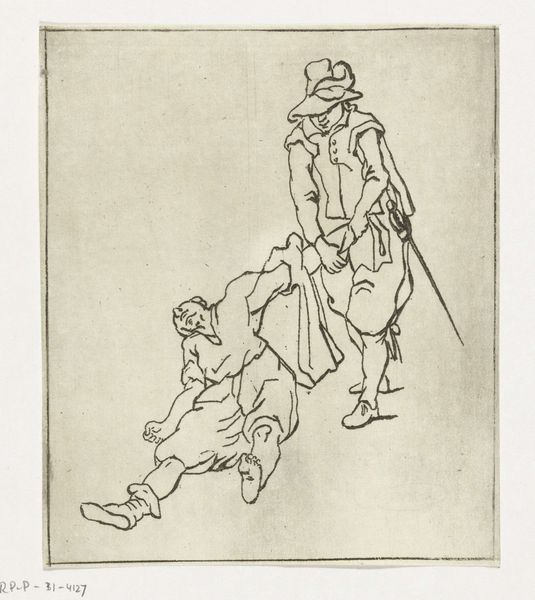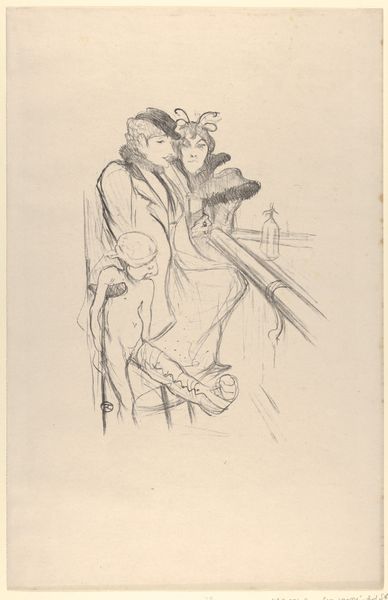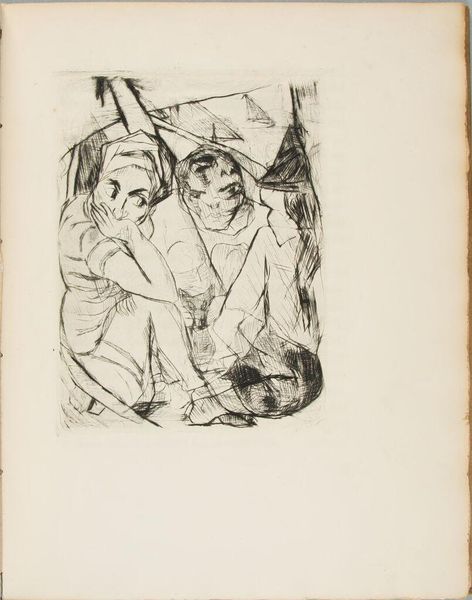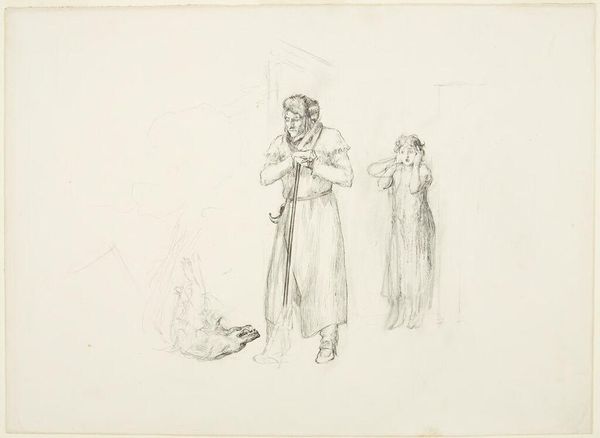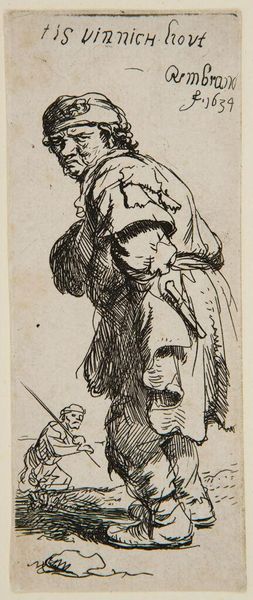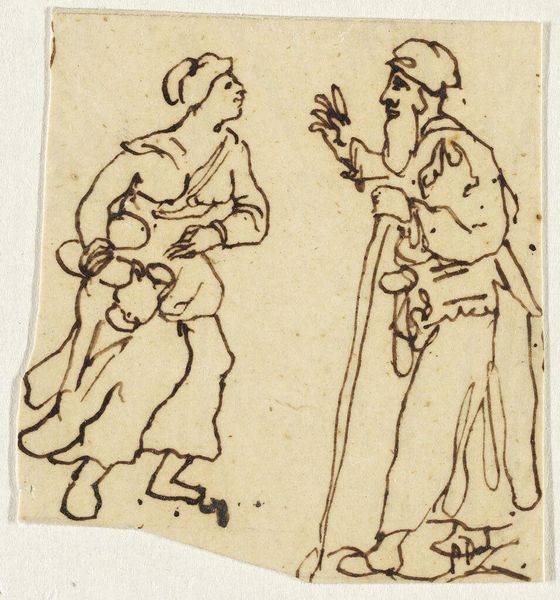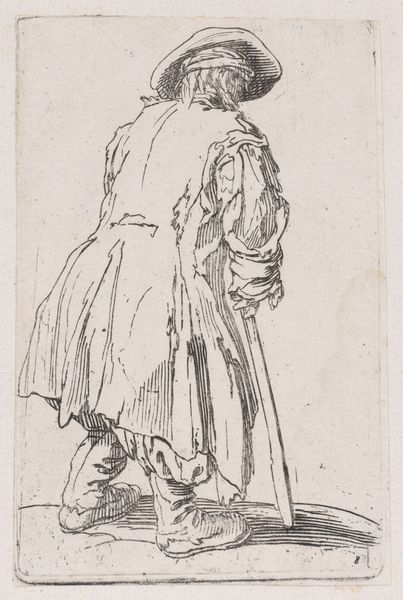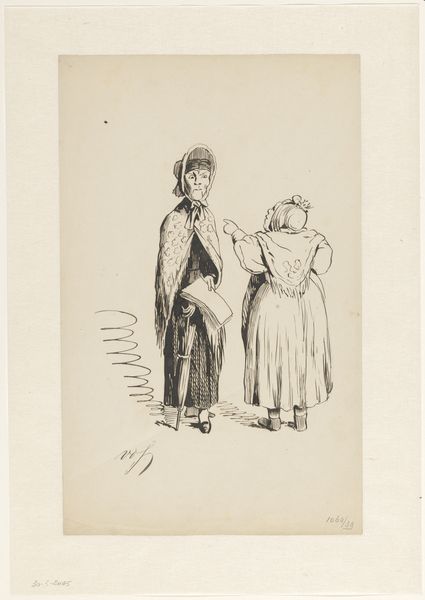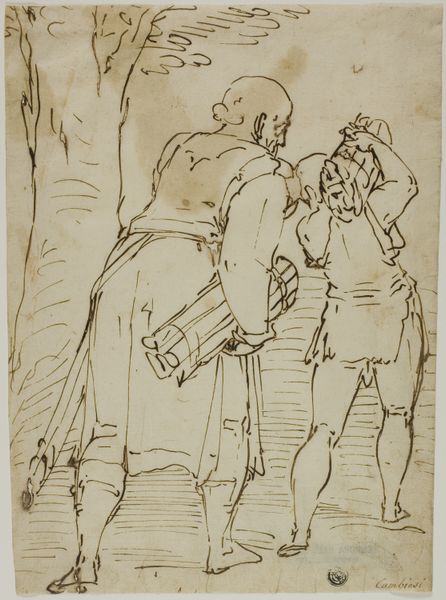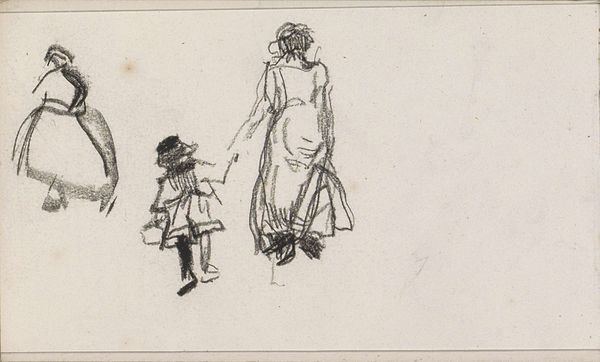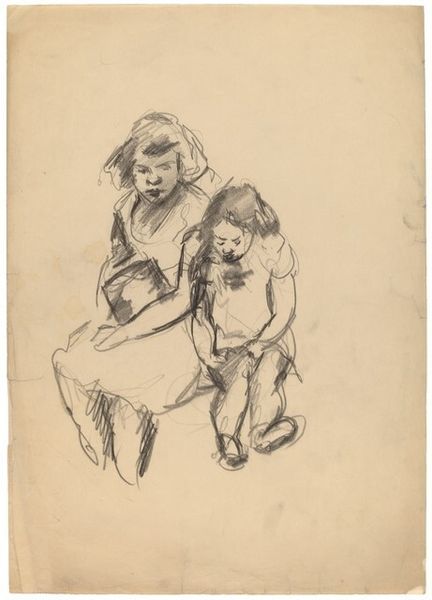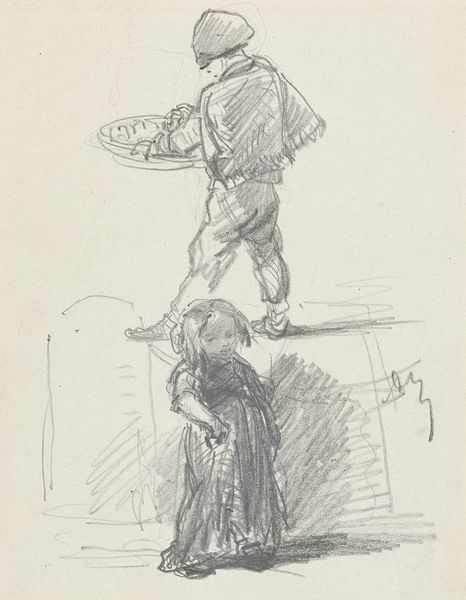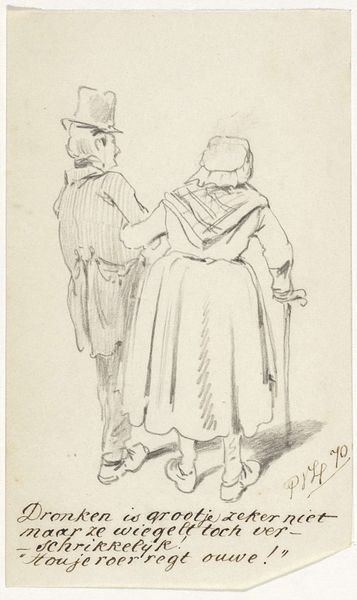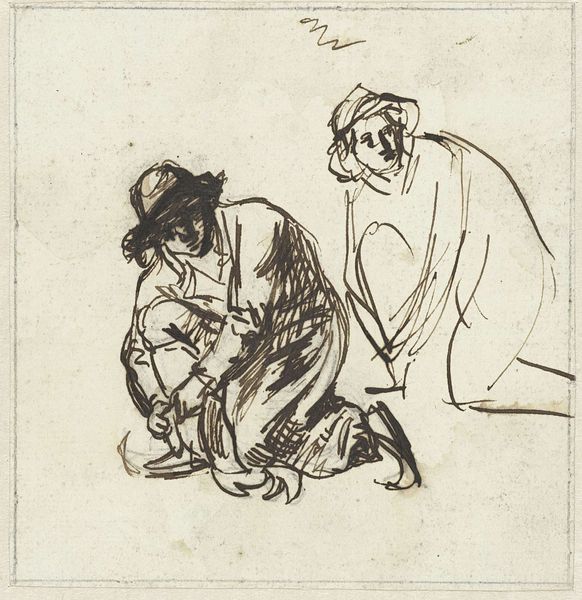
drawing, ink, pen
#
drawing
#
pen sketch
#
figuration
#
ink
#
pen
#
genre-painting
#
realism
Dimensions: height 140 mm, width 118 mm
Copyright: Rijks Museum: Open Domain
Curator: The realities of production always bleed into what is produced, no matter how much an artist strives for timelessness. Editor: Here we have "Soldaat rooft kleed van gesneuvelde," or "Soldier Looting Clothes from the Fallen," a pen and ink drawing attributed to Anthonie van den Bos, created sometime between 1778 and 1838. It’s…stark, isn't it? What's your interpretation of its themes? Curator: We can approach this pen sketch by considering its social context. The image depicts a soldier stripping a dead man – a violent, material act rooted in economic desperation. Who do you think benefits from this production, and whose labor goes unacknowledged? Editor: Well, the soldier, presumably, benefits from the looted clothing, a grim economic exchange in wartime. It seems a far cry from art's elevated status today. Curator: Precisely. But art is always implicated in systems of labor, isn’t it? The paper, the ink, the artist’s hand, all commodities within a social structure. Does the raw immediacy of this drawing disrupt typical heroic war imagery? Editor: Definitely. The focus isn't on grand strategy, but this ugly act of taking— almost an admission about where wealth really comes from. Does that reflect how the role of art materials might elevate some messages while suppressing others? Curator: Absolutely. Cheaper paper and readily available ink made creating art like this much more accessible to a broader audience, for example. We see then, it challenges the idea that luxury materials equate automatically to important content. Editor: So it really levels the playing field in artistic expression and even commentary. It makes me see those quick pen strokes in a whole new, empowered light. Curator: Exactly, it is the artist showing a type of labor hidden within a society and perhaps one to challenge the current status quo, maybe to provoke those in power. Editor: Thinking about it this way connects the drawing’s starkness with very material realities. That makes a stronger piece in my eyes! Curator: I agree. We see how materials and process directly shape meaning, revealing truths beyond the immediate depiction.
Comments
No comments
Be the first to comment and join the conversation on the ultimate creative platform.
